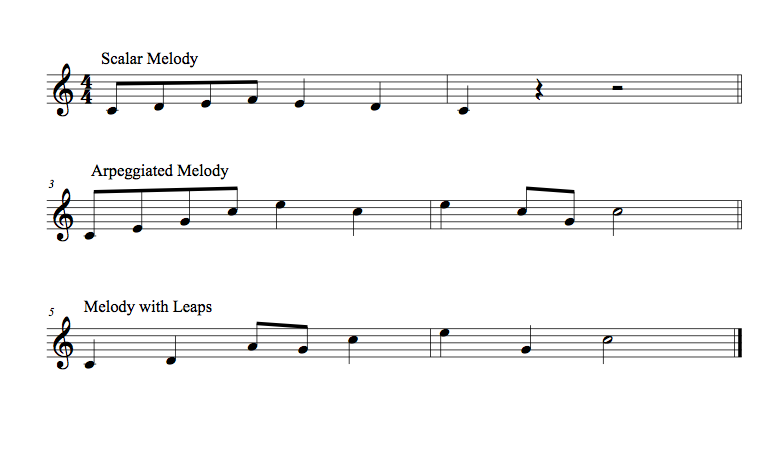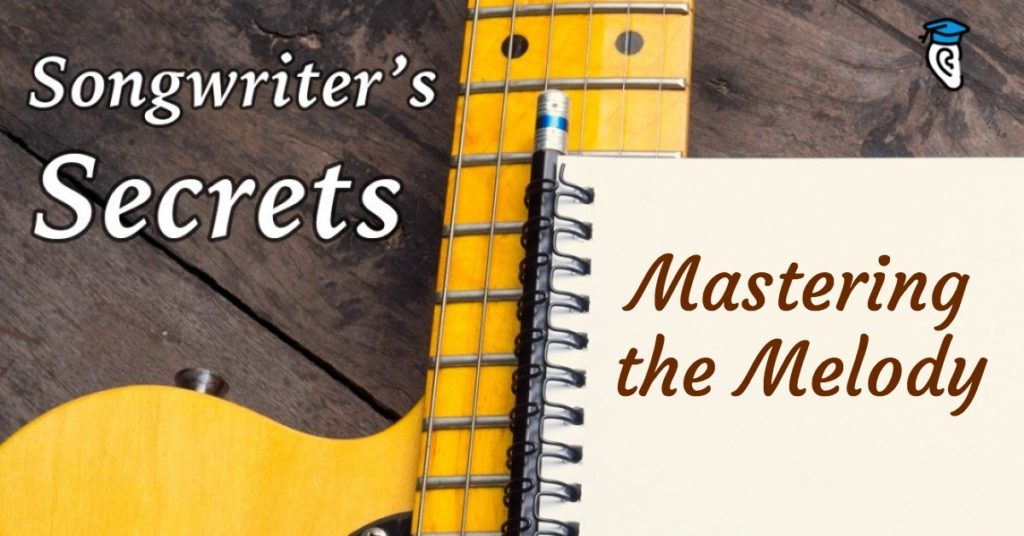In the last part of this series we covered the creation of great lyrics. But having great lyrics is only the first step in the songwriting process. To really shine, a great set of lyrics needs a good melody: a tune that the audience finds memorable and enjoyable.
Once you have created lyrics that you are happy with, it is time to figure out the melody for your song. In this article I’ll share some tips you can use to improve your own melody writing.
Melodies and Hooks
The melody you choose will stem from a few different factors:
- Your musical style and audience
- The singer’s abilities
- The rhythm of the lyrics you have written
In addition to writing a good melody, you need to find a hook in your song. The hook in a nutshell is the part of your song that sticks in your listener’s mind. As Blues Traveler put it, “The hook brings you back.”
Usually you will use the hook to name the song. You can find examples of a good hook in many popular songs. Below are some examples where the hook is also the title:
Michael Jackson’s “Beat It”
Beyonce’s “Put a Ring on It”
Meghan Trainor’s “All about that bass”
In these examples you can quickly and easily pick out the hook for the song. It is often repeated many times, is part of the chorus, is part of the title and is usually the most memorable part of the song.
If you haven’t discovered a hook in your own song yet, look over the lyrics and the chorus. Some musical styles, like classical music, may not need a hook, but if you are writing commercial music, be sure to use a hook to make your song memorable.
Musical Style
Your musical style will determine the type of melody you will need. Writing the tune for a Broadway musical or folk song is entirely different from writing rap or a country ballad! Most likely you have your own distinct musical style, or maybe you find that you fit between two or three different musical styles like hybrids such as indie rock or country pop. Or maybe your specialty is something like dance electronica, where the instrumentals take a front seat.
Each musical style has distinct characteristics. In general pop music, especially mainstream pop music, is very simple in its message, the vocals are heavily manipulated, and the hook is the most important aspect for a hit. Other styles like traditional country music, folk music, and hip-hop may focus more on what is being said over how it is being said in terms of melody notes. These might have a distinct hook, depending on the song, but the message is important. Then you have styles like dance music where the processing and production takes precedence over the actual lyrics, which might just be a few repeated phrases electronically manipulated.
How to Beat Writer’s Block
Every musician experiences some kind of “writer’s block.” When you are stuck, a little bit of improvisation and plain “goofing” around on your instrument can bring out about some fruitful musical ideas. Record them and save these ideas for later!
The Importance of Vocal Range
When you are writing a melody, you must make sure that a human singer can actually perform the song! While changing keys is one way to help the singer stay in their range, if you know who you are writing for or you are writing for yourself, you need to identify the vocal range of your singer and keep the melody within their range. Otherwise you risk the singer’s voice cracking at certain parts, or you can even cause vocal injury after repeated performances of a poorly written song.
If you do not know who your singer will be, then try to keep your melody within a commonly-used range. You can find online vocal range charts to help you determine what vocal range you should use. You can stray from these, but in general you’ll want to keep your melody in these ranges unless you know that the performer is a trained professional with an impressive multi-octave vocal range.
Exercise: Finding the Vocal Range
Practice finding your own vocal range. Your most comfortable range will most likely be a few notes higher than your lowest possible note and a few notes lower than your highest (in tune!) note. You also want to keep an eye on where your voice “breaks” and avoid writing any melodies that require you to sing around that break.
- Practice the exercise below in a number of keys.
- Identify where your vocal “break” is (where you voice cracks and goes from chest voice to head voice)
- Find your lowest possible note
- Find the highest note that you can hit while staying strong and in tune
- Based on these limits, explore to identify your comfortable range
Here’s another exercise to try:
Melody Tips
When writing a musical line, it is important to keep some general tips in mind.
Try to make your melody easily singable. In general, scalar or arpeggiated lines are easier to sing than lines with large leaps:

Most songwriters will work on the harmony as they are developing their melody. Even if the overall harmony changes later – the songwriter might choose to add in more complicated chords or change the overall sound by altering chords from minor to major for example – you will find it useful to work out the basic harmony while you are writing your melody.
Be sure that your melody generally stays in the same key as your harmony. Passing tones are acceptable, but ending on a non-chord tone will be jarring if the harmony does not fit. If you choose to keep that note in the melody, just be aware that you will need to adjust the harmony to reflect your melody. You can read more about non-chord tones at Music Theory Net.
Later in this series we will discuss figure out the rhythm of your vocal lines. Keep the number of words that your singer is expected to perform sensible. Many times amateur songwriters will try to stuff too many words into a short span of time, write lyrics which are awkward to deliver, or choose words that are really not singable.
When writing your melody, take the time to determine where you want to build a musical climax in your song. Usually at that point you want the excitement reflected in the melody by climbing up in pitch. Sometimes changes in harmony will help this too.
Watch how composer Michael New develops a melody:
You will be following a similar method in the next exercise. While it may seem like a lot of steps, remember that the more familiar you are with the process, the easier it will become over time.
What’s Next?
Your best bet as a songwriter is to develop a group of trusted songwriters that will gather together at least once or twice a month and honestly critique each other’s works. Take the negative criticism in good spirit. You won’t get better if all you ever hear is your mom telling you how awesome your songs are! You need other musicians that are able to (gently) rip your song to shreds so you can rebuild it and go on to write an amazing tune.
You also can use services like TAXI, Music Xray, and others to get back professional critiques of your music. Many of these services charge fees so be sure to do your homework before submitting to an online service. If you are near a university or music store, you might be able to take lessons in songwriting and get professional feedback there too.
Song writing is a craft that will take many years to develop. Building a strong music community around you as you learn the craft will be key for any longterm success. Share your song recordings with us in the comments below. What was the most challenging part of writing a melody? Were you able to find your hook? We’d love to hear from you!








